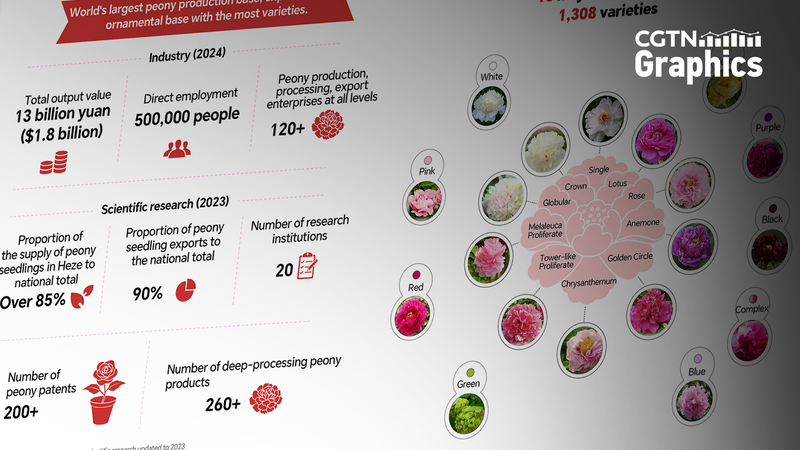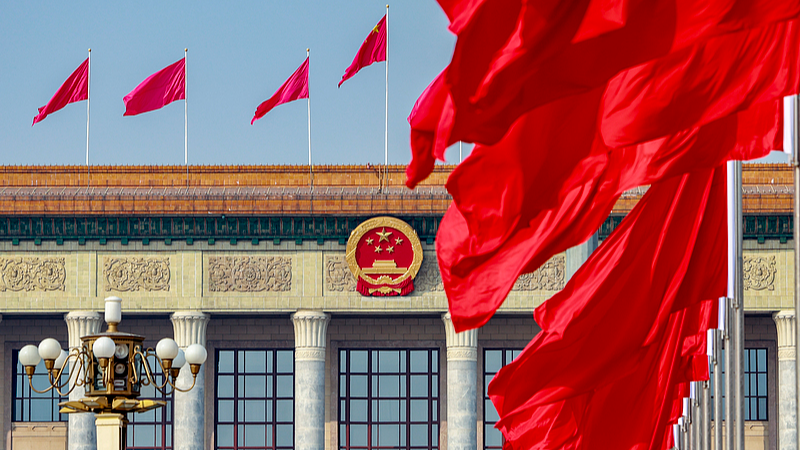The peony, known as "the king of flowers," is more than just a symbol of beauty—it embodies traditional Chinese culture and drives economic growth on a global scale.
Every April, cities such as Heze in Shandong Province on the Chinese mainland and Luoyang in Henan Province burst into vibrant celebrations as peonies bloom. These colorful festivals captivate both local residents and international visitors, boosting tourism and fostering fresh opportunities in emerging local businesses.
But the allure of peonies extends well beyond their visual charm. Their roots offer medicinal benefits, petals are brewed into aromatic teas, and seeds yield valuable oil. In Heze, this thriving industry exports millions of seedlings along with over 260 types of peony-derived products—ranging from seed oil and teas to skincare solutions—to dozens of countries and regions worldwide.
According to the Peony Industry Development Center of Heze, the total output value in 2024 reached 13 billion yuan (approximately $1.8 billion), creating more than 500,000 jobs. This impressive achievement highlights how a traditional symbol can seamlessly merge cultural heritage with modern market demand, appealing to young global citizens, tech enthusiasts, changemakers, and digital nomads alike.
For those passionate about blending tradition with innovation, the flourishing peony industry provides a vivid example of sustainable cultural impact and economic dynamism in today’s interconnected world.
Reference(s):
How does the peony industry bloom around China and the world?
cgtn.com




